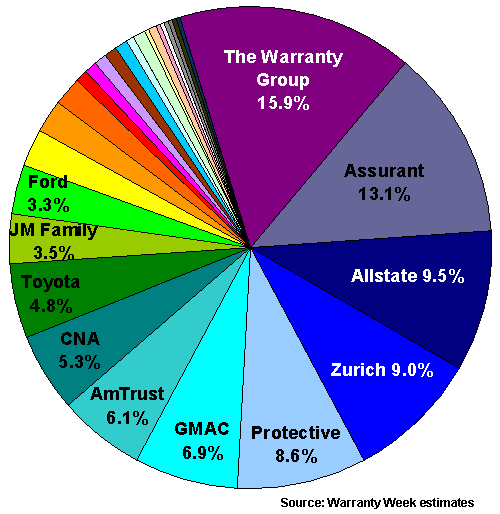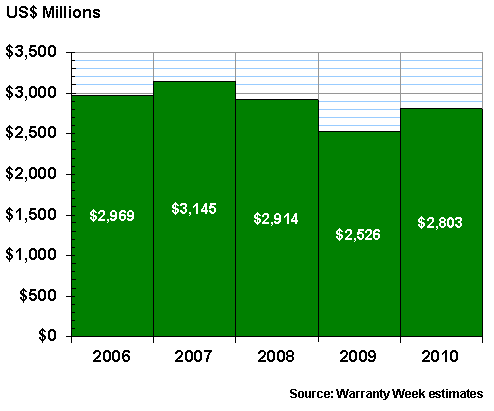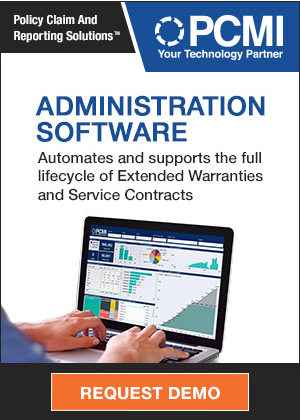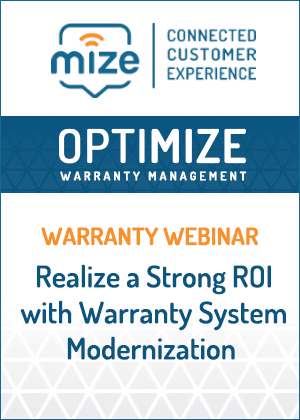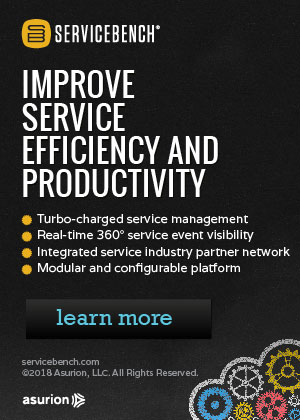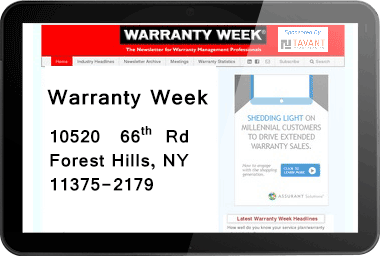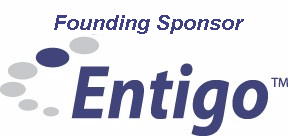August 26, 2010 |

|
ISSN 1550-9214 |
Vehicle Service Contract Underwriters, Part 1:If you know how many vehicles were sold and how much insurance was purchased, you can make a pretty good guess of how much consumers have spent on vehicle service contracts. But who sold them? How much were they? Some answers follow.At long last, our tour of the vehicle service contract industry is coming to an end. Those weekly snapshots are turning into a tour guide, and the size and shape of the industry is coming into focus. This week we're looking at just the underwriters of vehicle service contracts -- the insurance companies that guarantee to pay claims if the obligor doesn't or can't pay within a given period of time. Vehicle service contracts aren't insurance products, but they are backed by insurance companies. But mechanical breakdown policies are considered to be insurance, primarily because they're sold by insurance companies. Crazy, isn't it? Right before your eyes, we're going to develop a simplified model of the VSC industry -- one which we hope will be not only easy to attack but also worth trying to improve in the next version. We think it's incredible that throughout 2008 and 2009, when the "expired warranty" scam was in full swing, not even those with subpoena power were able to answer one simple question: How big is this industry? What Do You Think?We're foolish enough to try. But then again, we've been probing and interviewing and gathering snapshots for almost eight months now, knowing how little has been made public elsewhere. And therefore we want to get the model right. So we want to continue the discussion long after these pie charts are published. Please click on the "contact" button at the top right of this page and tell us what you think. Privacy and confidentiality are assumed unless the reader desires their comments or opinions to be made public. We started publishing details on the mathematical model last week, providing estimates of 6.2 million contracts sold by auto dealerships this year, for which consumers will pay about $10.6 billion. With an additional $560 million generated through direct-to-consumer sales, we pegged the 2010 U.S. VSC market at $11.175 billion. That figure is the amounts paid by consumers, or from an insurance point of view the gross premiums written -- the total amount of money generated by VSC sales. Now comes the confusion. This week, we're going to measure the market a completely different way -- at the insurance level. In many states, some sort of contingent liability insurance policy is required before the administrator/obligor can do business. In some states, however, insurance is not required, and it's perfectly legal for a dealer or an administrator to self-insure the contracts they sell. But it's always a good idea to have an insurance company ultimately backing the contract, just in case one of those middlemen goes bankrupt. Underwriter ListIn the Feb. 11, 2010 newsletter, we listed all the insurance companies and risk retention groups we found who were backing service contracts of one kind or another -- everything from construction machinery to office equipment. That was an initial attempt to identify the major players in service contract underwriting, and to narrow the field down to just those who back vehicle service contracts. Within just that vehicle side of the business, the two big changes since February have been the upgrade of AmTrust's Wesco Insurance Company from an A- to an A, and the upgrade of Ford's American Road Insurance Company from a B+ to a B++. It all sounds a bit Orwellian, but suffice it to say that an A- is the lowest high grade and B++ is the highest low grade. GMAC and Ford are now both at B++, which complicates the ability of some dealers to help customers finance their extended warranties. Even if A.M. Best considers B++ to be good enough, some lenders do not agree. We found some others at B++ or B+, but they were mostly smaller "captive" insurance companies or risk retention groups whose only customers seemed to be their owners: the administrators/obligors selling the actual service contracts. This type of arrangement is sufficient to pass muster in states that require insurance, in that it has all the right paperwork in place. But does it really provide honest-to-goodness protection? Signing New AdministratorsDuring the course of our VSC industry tour, we've come across three administrators that have added major players to their stable of underwriters. In the July 29 newsletter, we noted that Interstate National Dealer Services Inc. signed with Virginia Surety Company, a subsidiary of The Warranty Group. Back in February, Penn Warranty Corp. also signed with Virginia Surety. This week, we're breaking the news that the Guardian Warranty Corp. is signing with American Bankers Insurance Company of Florida, a unit of Assurant Solutions. The new service contracts will be available to dealers beginning in mid-September. Guardian also operates a risk retention group, the Global International Insurance Company Inc., which A.M. Best rates an A- (Excellent). The RRG currently underwrites most of Guardian's contracts, which earns it a slot in the list of Figure 1. And the company also sells self-insured service contracts in states that permit it. Now Guardian can expand into states that require third parties to provide the insurance, while continuing to operate its RRG and sell its self-insured contracts. Make no doubt about it: third party insurance is expensive. But it's becoming a necessary cost of doing business, especially when poorly structured underwriters domiciled in places with sleepy regulators collapse and take their contracts with them to the bottom. And just as we were about to go to press, AmTrust Financial Services Inc. announced that its subsidiary AMT Warranty Corp. has acquired the remaining 73% of Warrantech Corp. that it didn't already own. The company also announced that from 2007 through the second quarter of 2010, Warrantech generated over $224 million in written premium for AmTrust, which confirms our revenue estimates for the administrator and its underwriter rather precisely. This also builds AmTrust into an even more vertically-integrated competitor of already heavily vertically-integrated underwriters such as The Warranty Group, Zurich North America, Allstate Dealer Services, and Assurant Solutions. The name of the game these days is to have a presence at every level of the service contract business: in the dealerships, at the retailers, as administrators, obligors, and of course, as underwriters. And what's done in the U.S. can then be replicated in Europe and South America. Genuinely Fake Underwriter?At the other extreme, we've also found other VSC-affiliated insurance companies that are too small to be rated by A.M. Best. And we found one that doesn't seem to exist at all. For instance, Genuine Warranty Solutions Inc., an Orwellian name if ever there was one, alleges that it's backed by an insurance company called American Capital Underwriting Ltd. We couldn't find a single confirming detail about the insurance company with A.M. Best, any of the state departments of insurance, or any of the insurance industry associations. But as a detailed analysis that a gentleman posted last year on RangeRovers.net concludes, that "insurance" company seems to exist only in a Mail Boxes Etc. drop box located near Victoria Station in London. We've heard of "tight quarters" before, but that's ridiculous, even for Pimlico. But back to our model. As mentioned, we're estimating the 2010 U.S. vehicle service contract industry at $11.175 billion. We're additionally estimating that $10.587 billion of that is backed by insurance, leaving $5880 million self-insured by the administrator/obligor, by an unrated RRG that they own, or by the selling dealer (or web site). That's a pretty good result: nearly 95% backed by insurance (though we're worried about the vitality of some of the carriers). How We Got to $2.85 BillionNext week, we'll go deeper into the administrators, obligors, and dealers doing the actual selling. This week, we simply want to lay out what we've found about the underwriters. but before we can do that, we have to explain why the pie chart below is only $2.85 billion in size. So let's work backwards through the model. As mentioned, consumers will pay $11.175 billion for vehicle service contracts this year. Of that, $10.587 billion will be fully insured. Dealers and other agents will take around 46% in sales commissions. And then administrators will pay about 46% of what they're left with to insurance underwriters. That's the $2.85 billion. Or let's look at it from the point of view of a single service contract. Let's estimate that the average VSC is priced at $1,850. It may be more. It may be less. But let's assume $1,850 is paid by the consumer. The dealer takes an $850 commission and pays $1,000 to the administrator. Alternatively, the administrator charges the dealer $1,000 and the dealer applies an 85% markup. But let's assume that 46% stays with the dealer. The administrator/obligor then needs to purchase insurance. The price per contract is going to be $460. We've seen insurance company bankruptcies where they were collecting $123 or $257 per contract, so let's call that dangerously low. And we're sure there are insurance companies getting $600 or even $700 per contract. But let's assume $460 is typical. Which Way to Figure Percentages?There are two ways to look at that amount. It's 46% of the administrator's $1,000. And it's also 25% of the consumer's $1,850. So while an administrator might claim that its underwriter demands 46%, the underwriting portion of the consumer's premium is only 25%. Therefore, in an $11.175 billion market (with $588 million of it self-insured), we'd be looking for $2.85 billion in underwriting revenue. And if we disregarded the sales commissions and dealer markups, we believe we'd still be looking for $2.85 billion, albeit in a $6 billion market. In talking to dealers, consumers, and insurance companies, along with countless requests for copies of contracts, we found 32 companies that were underwriting VSCs and were also rated by A.M. Best. We're considering A.M. Best to be the gatekeeper here: if they've never heard of you, you're not an underwriter. You go into the uninsured column. In the pie charts below, we're going to label just the larger players. But we'll list all 32 of the companies right below that. In some cases, we'll use a familiar family name rather than the exact name of the insurance company. We hope, for instance, that people understand that Virginia Surety Company Inc. is wholly-owned by The Warranty Group, and that American Bankers Insurance Company of Florida is wholly-owned by Assurant Solutions. When we see one of those names on a contract, we'll put a check mark in the parent company's column. We should note that both Assurant Solutions and AmTrust are longtime sponsors of this newsletter. Without the continued support of them and other sponsors, this market report would not have been possible. However, they have had no involvement with its preparation. We would expect them to be just as upset, relieved or joyful as the other 30 underwriters will be when they see the pie chart below. Market Share in a Competitive IndustryAs can be seen in Figure 1, none of the major players garnered 20% or more of the industry, though the top six have 63% of it. This somewhat mirrors the state of the personal auto insurance market in the U.S., which we examined in some detail the June 25 newsletter. Although six auto insurance companies had more than half the market between them, none had more than 20% by themselves. Figure 1 | ||||||||||||||||||||||||||||||||||||||||||||||||||||||||||||||||||||||||||||||||||||||||||||||||||||||||
| ||||||||||||||||||||||||||||||||||||||||||||||||||||||||||||||||||||||||||||||||||||||||||||||||||||||||


